I've lived in Florida for 25 years and these are the 11 biggest mistakes I see tourists make at the beach
Chelsea Greenwood

- I'm a 25-year Florida resident who goes to the beach at least once a month.
- When I do, I often see tourists make mistakes that mistreat beaches or will ruin their day.
I'm a 25-year Florida resident who goes to the beach at least once a month. I often see tourists mistreat our beaches or do things that will ruin their day that could be easily avoided.

There's nothing like a day at the beach in Florida swimming in warm waves, strolling the shore, and taking in briny breezes. I've lived in the state for most of my life and know it has some of the world's best beaches.
I'll also be the first to tell you that executing the perfect beach day in Florida takes a bit of planning. Timing is important, gearing up is key, and it's crucial that you know and respect the laws of the land and nature. Unfortunately, in my experience, visitors to Florida don't always follow these rules.
I remember seeing a tourist tossing potato chips to a flock of seagulls at my local beach, and, after some frustration and discussion, myself and some of my neighbors approached him and politely asked him to stop.
Not only does bad beach behavior run the risk of ruining a tourist's own visit to the beach, but it could anger locals, damage marine life and habitats, or result in a fine.
However, I don't want to discourage anyone from visiting. Quite the opposite — sharing the state's natural resources with respectful visitors is one of my greatest joys. After all, I love my home state and want others to, as well.
Just be sure to avoid the following mistakes that I've seen tourists make.
Often, I see tourists disrupting sea turtle nests, which risks damaging them.
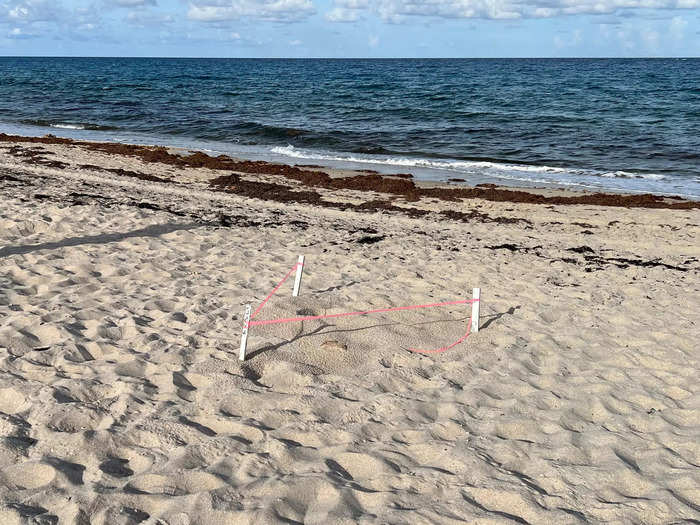
Florida's beaches play a crucial role in the lives of sea turtles. Every year, females lay their eggs around the beginning of May and the little ones emerge from the nests up until the end of October, which marks the end of sea turtle season.
Our beaches host nearly 90% of sea turtle nests in the country and all of Florida's sea turtles are endangered, so it's crucial to protect nest sites. They're demarcated by wood stakes and colorful flags, but they're not so big that they'll prevent you from finding a prime spot on the sand for your beach day.
However, some visitors can't resist tampering with the nests and that's a big mistake. Federal and state laws protect the turtles, and harming them could result in a third-degree felony.
These laws are enforced. In Miami, a tourist who intentionally stomped on a sea turtle nest was arrested in 2019, and, in 2022, a man was arrested for sitting on a nest. Unfortunately, I've seen people step into the nest and poke around in the sand, hoping to get a glimpse of what the flags and stakes are protecting.
Floridians go to such lengths to protect turtles that streetlights near beaches are modified so hatchlings won't confuse them for the light of the moon, which guides them to crawl into the sea.
Make sure to view them from a respectable distance, or better yet, join a hatching tour led by conservationists for a glimpse of this wondrous sight without interfering.
In my observation, Florida tourists never seem to use enough SPF and then forget to reapply, resulting in painful sunburns.
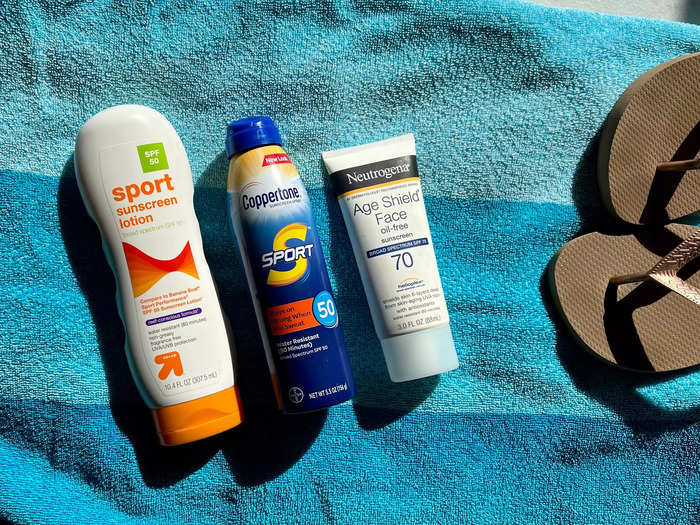
I never go to the beach without sunblock, even on a cloudy day.
I've also learned that if I don't apply enough sunblock, choose a high enough SPF, or fail to reapply frequently, I will get badly burned.
In my experience, a burn is also — usually — a telltale sign of a tourist as most people don't know what constitutes "enough."
Per the Skin Cancer Foundation, to reach full sun protection, you must apply two tablespoons (about the volume of a shot glass) of sunblock to exposed parts of your body, including a nickel-sized amount for your face. They also recommend reapplying every two hours you're in the sun.
When my friends come to visit, I notice that they tend to slather up once and think they're good for the day. If you go swimming, towel yourself dry, or sweat a lot, be sure to reapply immediately afterward.
The organization also recommends using broad-spectrum sunblock, which blocks both UVA and UVB rays, and choosing an SPF of at least 15, but ideally 30 or more. Plus, don't forget to check the expiration date. SPF usually lasts about three years but then loses efficacy.
As a regular beachgoer, an umbrella is a key piece of gear for me. I frequently see visitors forget to bring one.
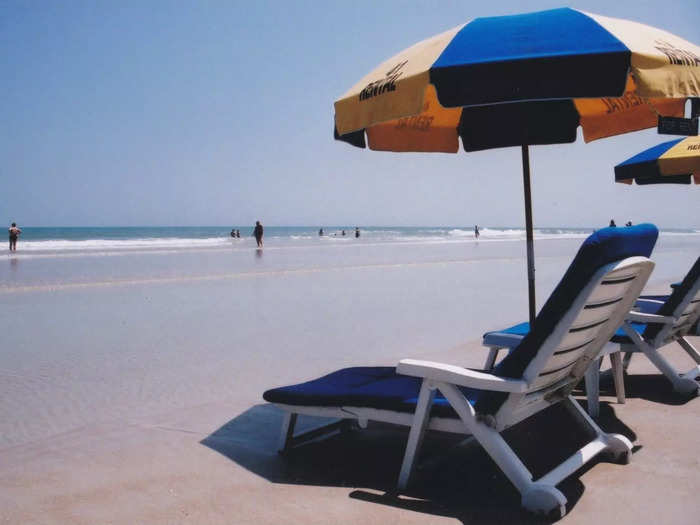
While applying sunblock at the beach is a must, I don't think enough people consider an umbrella as well
Am umbrella offers an additional layer of protection and is also quite useful.
On a sunny day, I find the light reflecting off the beach to be blinding, making it difficult to read or relax. I think my umbrella helps minimize this effect.
The Florida sun is also relentless. In addition to a severe sunburn, excess sun exposure can also cause dehydration, heat exhaustion, and heat stroke. An umbrella's precious shade helps to prevent these scenarios.
Plus, I like how planting an umbrella in the sand creates my own little camp for the day, around which I can position my chairs, towels, blankets, and cooler. I always bring an especially colorful or uniquely patterned umbrella, too, so it can help others find me on crowded beach days.
Please don't feed seagulls. It's an unspoken rule, but Floridians like me hate tourists for it.
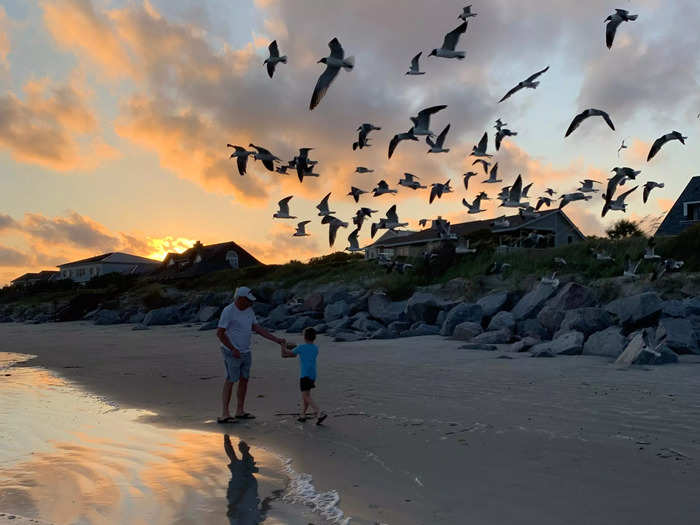
Remember in "Finding Nemo" how seagulls all greedily shouted, "Mine!" when food was around? In my experience, that's an accurate depiction.
And I don't think they're dumb, either. When you pull out a sandwich to enjoy during your beach day, they'll likely swarm you in droves. I've seen it many times.
And so I implore you: do not encourage this behavior by feeding them. Not only is it annoying to have a flock of birds dive-bombing the beach, but seagulls might be more likely to poop on you and your gear, cut you with their sharp beaks, or disturb other native birds nesting nearby.
Gathering large flocks of seagulls in one place can also boost the chance of spreading avian disease, diminish their fear of humans, and encourage them to eat foreign substances that could be dangerous.
I've seen visitors approach jellyfish since they look cool, but touching them is a big no-no.
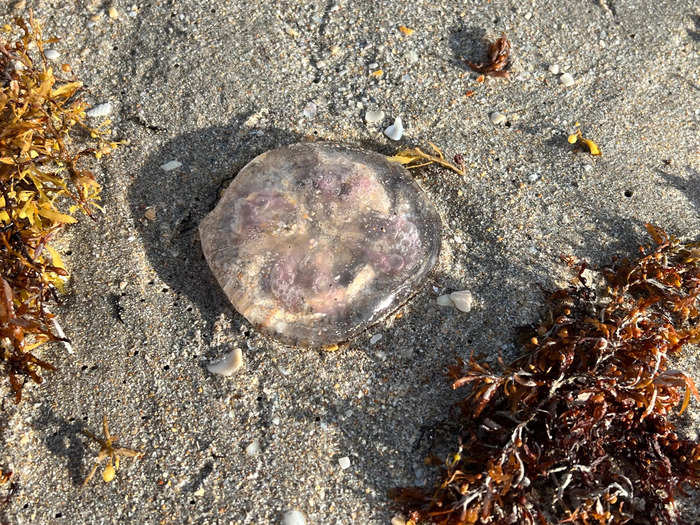
In my years of living in Florida, I've found that it's not unusual to stroll down a Florida beach and see a translucent blob near the water line — a jellyfish.
And while it might look really neat, that jellyfish might be dead or dying or could sting you. It isn't safe to touch.
Several of the state's species, including sea nettles and moon jellyfish, can sting you, potentially leading to deadly allergic reactions in some people. Even more dangerous is the Portuguese man-of-war, which has long tentacles that, upon contact, can leave welts, cause extreme pain, and lead to severe allergic reactions.
You might also see jellyfish while you're in the water. Just swim away and warn others. Don't try to move it or catch it.
I've seen tourists ignore warning flags, but they're important for safety.
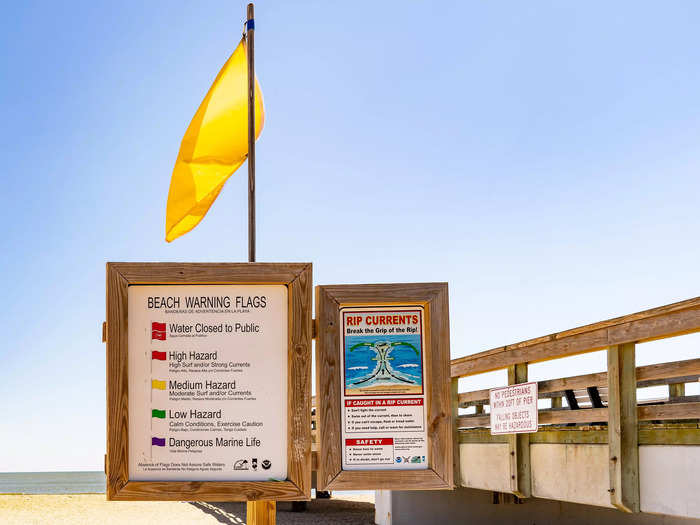
Florida's beaches have plenty of signage to enforce rules and keep visitors safe.
By law, all public beaches in the state must display warning flags to alert you of possible danger, including strong currents (red flag) or the presence of dangerous marine life (purple flag).
In fact, double red flags indicate that the beach is closed due to very hazardous conditions, like a strong undertow. You could be penalized for entering the water, which is a lesson some tourists learn the hard way. In Walton County, from January to October 2020, there were 302 reported incidents of people entering the water under a double red-flag warning. This prompted local officials to implement stricter laws, like a $500 fine.
Other signage typically informs you when high tide and low tide occur and how calm or choppy the water is that day. Locals know to take note of this info when they arrive and plan accordingly, and I hope tourists will as well.
In my experience, a lot of beachgoers don't know how to respond to a rip current. That could be deadly.
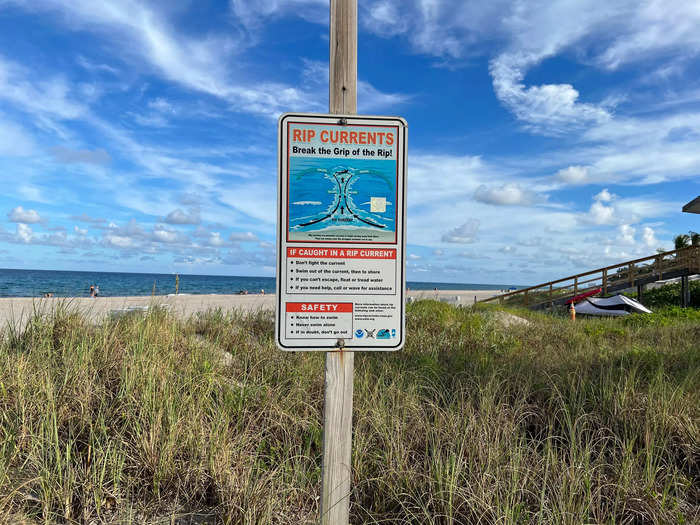
Red flags on the beach can indicate the presence of a rip current, which is a narrow but powerful channel of water often caused by a hole or low point in a sandbar. Rip currents move about one to two feet per second, and can sweep up unsuspecting swimmers and swiftly carry them away from shore.
If you missed the aforementioned warning flag, and you find yourself in a rip current, instinct will tells you to swim in the opposite direction, back to shore.
But fighting the power of the rip current is pointless: You'll just get worn out. Instead, swim parallel to the shore so that you can escape the current, and then swim to the beach. Try not to panic, and keep your head above water.
More than 100 people die annually in the United States because of rip currents, so this is knowledge that every beachgoer should internalize and share.
Most Florida beaches don't allow dogs, but I see tourists bring them anyway.
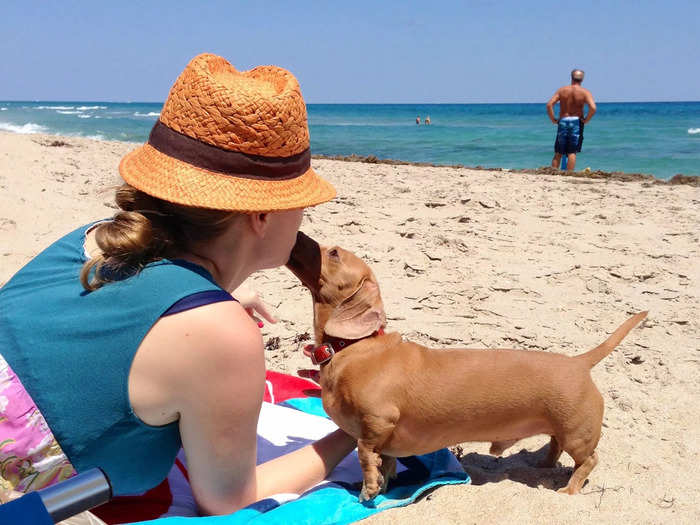
Any dog owner like myself will be the first to admit that the joy of a dog frolicking on a beach is infectious.
But, while your pooch enjoys the sun, sand, and surf, you could be breaking the law. Many beaches in Florida are closed to dogs because they might damage sea turtle nests and sand dunes, or leave urine and feces behind, which nobody wants to step on during their beach stroll.
While there are some dog-friendly beaches in Florida, you should consider the health and safety of your dog before going to one, too. If the sun-baked sand feels scorching hot on your feet, it probably feels even worse to your dog's sensitive paws. On hot days, I suggest keeping your dog home to prevent dehydration or heatstroke, and if you do decide to hit the sand, make sure they don't eat things they shouldn't, or get lost and wander away.
In 2010, when I first got my dog, Finnegan, a miniature dachshund, I brought him to the beach several times before a fellow beachgoer informed me that my local beach didn't allow dogs. I could also tell it was often too hot for him. He panted a lot, probably from being overheated, and tended to eat sand and just about anything else he could find on the beach. Since then, I only bring him to dog-friendly beaches when I know it will be comfortable weather, and always watch him closely.
I don't think that many visitors know that driving your car on the beach is illegal in most of Florida.

If you dream of cruising down the beach in your Jeep with the sea breeze blowing through your hair, choose your destination carefully, or risk being charged with a misdemeanor.
The majority of Florida's public beaches don't allow cars on the sand. Select cities, like Daytona Beach, New Smyrna Beach, and St. Augustine are the exceptions, where beach driving is a local tradition.
But even if you can drive your car on the beach, that doesn't necessarily mean you should. The sand might be too soft or the tides too strong and your ride could get stuck or even wind up underwater. On Amelia Island in 2019, one unlucky beachgoer was seriously injured when a car hurtled over a sand dune and hit her.
I've seen tourists take home more than just shells from Florida beaches and wish they wouldn't.
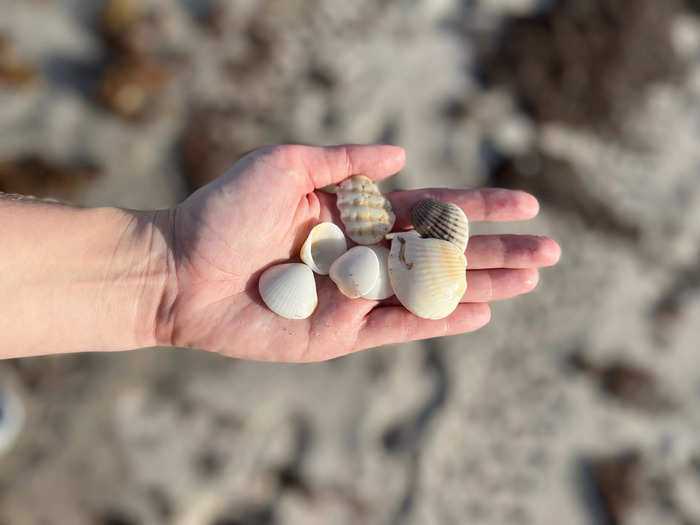
I know first-hand that shelling is a popular pastime for tourists in the Sunshine State, especially along the Gulf Coast, where the pickings are high quality. And you're more than welcome to bring home any shell you find as a free souvenir.
But if you find a shell that happens to contain a live animal, like a hermit crab or a conch, leave it be, or you'll be breaking the law. If you remove marine life — including starfish, sand dollars, seahorses, and fish — from a Florida beach, you'll face a fine.
You also need a license to fish. Out-of-state licenses are not accepted, but it isn't difficult for visitors to apply for a Florida fishing license while they're visiting. I've had friends and family come in from out of state and easily apply for a license before going out on a fishing trip, and I've never seen anyone encounter any problems, so long as they follow the rules.
Lastly, I see visitors walking on sand dunes, but it's also illegal.
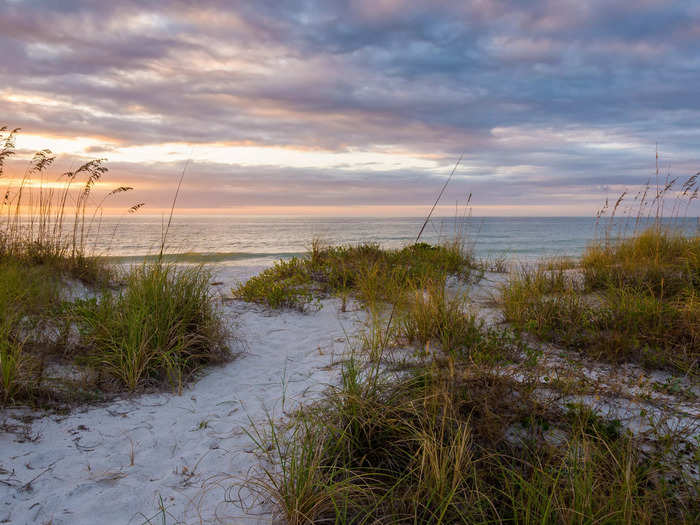
If you're thinking about getting a selfie on a Florida sand dune during your day at the beach, think again. Damaging sand dunes in any way violates the Florida Beach and Shore Preservation Act. So, if you walk or sit on one, be prepared to pay a fine.
Dunes are so important because they block the water from high tides and storm surges from encroaching on land, which develop due to hurricanes, and plants that grow on dunes develop root systems that help prevent erosion.
Since sand dunes are the first line of defense in many coastal communities, I implore visitors to please treat them respectfully.
Popular Right Now
Popular Keywords
Advertisement